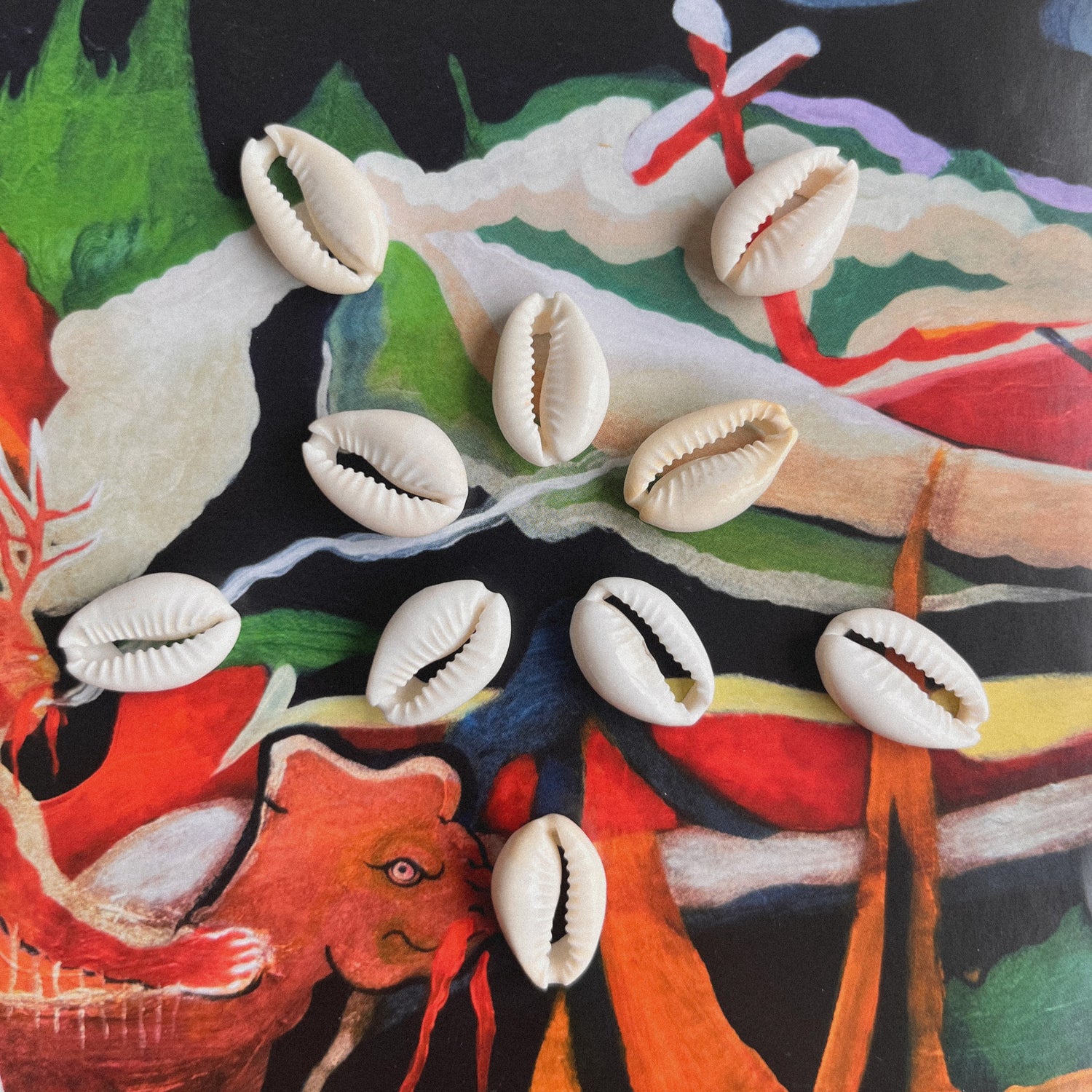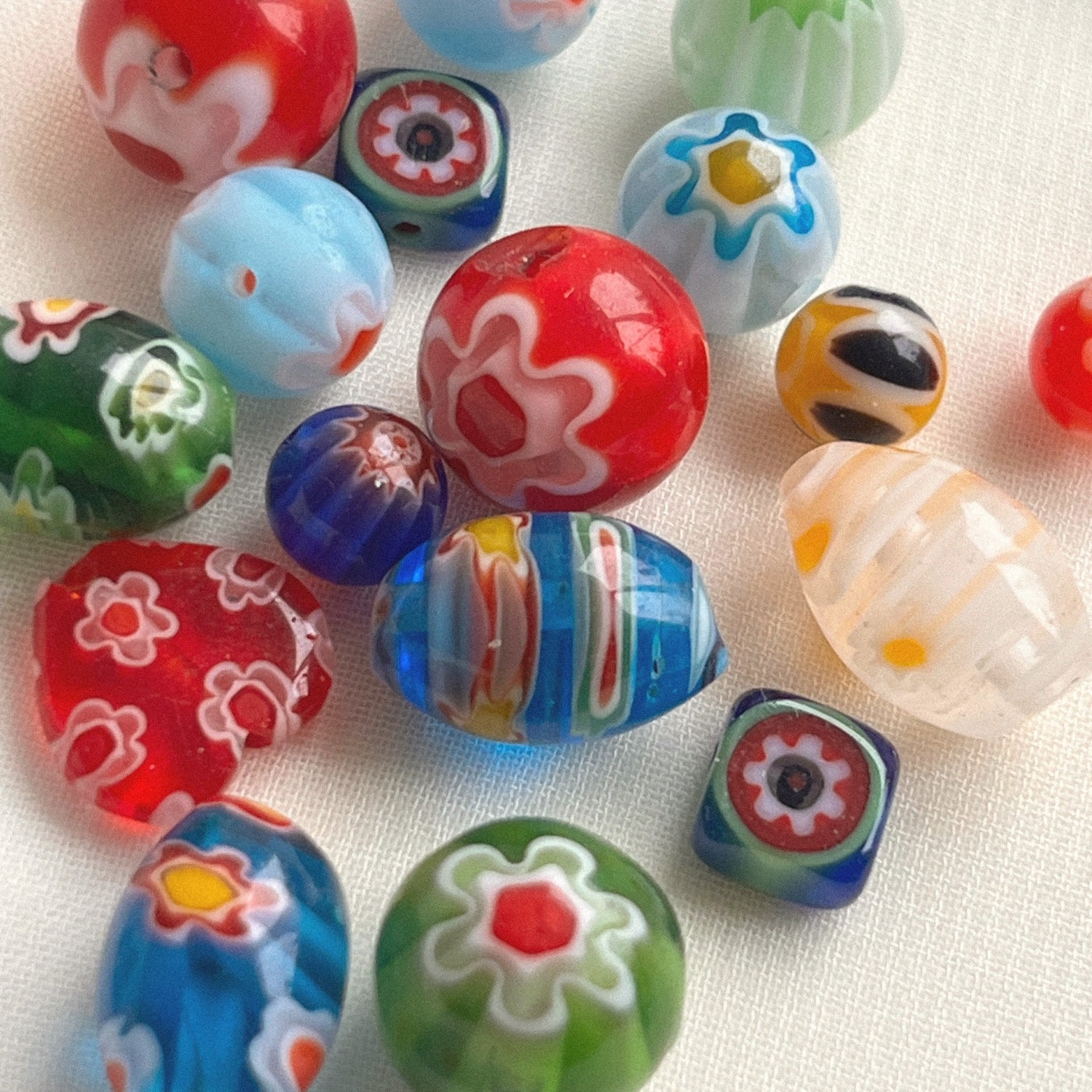The Tapu Collection
Presenting Tapu, a collection of jewelry pieces that gives a contemporary twist to Surinamese jewelry. Frequently seen in modern accessories, this collection dives deeper into the history of the cowrie shell and the millefiori bead. With Tapu I celebrate innovation, while paying homage to the deep-rooted history and cultural significance behind it.
The pieces in this collection are a fusion of my fascination for seashells and the cultural jewelry of Suriname. Growing up with only a few Surinamese and Javanese traditions, in my artistic practice I explore and learn more about the cultural heritage of Suriname, while resonating with my personal style and beliefs as well.
Like my previous collection Stitch & Tell, I aim to shine light on the captivating stories that are embedded in Surinamese culture. By wearing these jewelry pieces you become part of a narrative, celebrating the past while embracing the present. I invite you to read further and discover the layers of Tapu!

Cowrie Shells
Cowries are seaslugs that live in the Pacific Ocean, Indian Ocean, Red Sea, Caribbean Sea and Mediterranean Sea. In South-East Asia in the early 15th century, barter trade was prevalent. Gold and silver were the benchmark for measuring value. Cowrie shells had economic value too and they travelled across the world through trading. It's most likely the first universal currency and it has been for longer than any other currency in human history.
The value of cowries was greater in West-Africa than in the places they originated from. In the 17th century, Dutch traders learned about the high value and repeatedly sent shiploads of cowrie shells to colonial enclaves and trading posts in Africa. Alongside gold and other goods, they used the shells to buy enslaved people, which led to the cowrie shells acquiring an unfortunate nickname: ‘slave money.’
In Suriname, the shells got a new nickname: ‘pamoni’. ‘Pa’ refers to the enslaved people of the Papa tribe, who were brought to Suriname from the Slave Coast in the Kingdom of Dahomey. ‘Moni’ means money in Sranantongo, the Surinamese language. Cowrie shells continued to be used as currency. People who escaped the plantations formed their own communities and economies, where they paid with pamoni.
Pamoni also holds spiritual value. In the Surinamese winti religion it’s used in rituals and it serves as a protective talisman. Cowrie shells are often incorporated in a necklace called ‘ala kondre’, meaning ‘all countries’, which is an important jewelry piece in the winti religion.

Millefiori / Ala Kondre Beads
Another talisman or 'tapu' you’ll often see looks a lot like a millefiori bead*. Millefiori is Italian for ‘thousand flowers’, referring to the floral patterns in the beads. Like cowrie shells, millefiori beads were exported to West-Africa. They originated from Venice, where they were made in the 15th century.
In the 17th century they became popular under the name ‘trade beads’: they were traded for gold, ivory and again for enslaved people as well. These beads, also called ‘ala kondre’, symbolise the unity of the people of Suriname that came from all over the world.
*The Surinamese ala kondre bead can be compared to the millefiori beads in the picture on the right, but isn't the same. Explore the sources below this page to see pictures of the ala kondre beads.
Used sources for the information provided above:
I encourage anyone who's interested in the history of jewelry and cultural heritage to dive into these sources. Any comments or recommendations are welcome. Let's create a safe and inviting space for us to learn in and keep these stories alive!
Much love, Anouk <3
Discover the Tapu Collection
-
 Sold out
Sold outCoast to Coast
Regular price €44,99 EURRegular priceUnit price per -
 Sold out
Sold outOcean's Breath I
Regular price €34,99 EURRegular priceUnit price per€39,00 EURSale price €34,99 EURSold out -
 Sold out
Sold outMarine Mosaic I
Regular price €28,99 EURRegular priceUnit price per -
 Sold out
Sold outCowrie Charm
Regular price €34,99 EURRegular priceUnit price per





